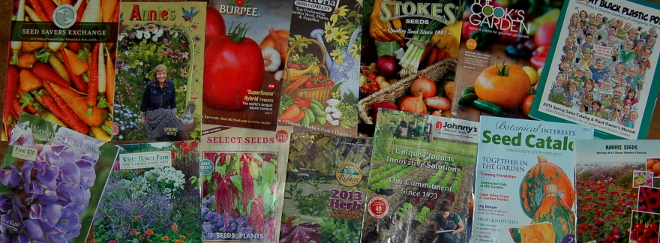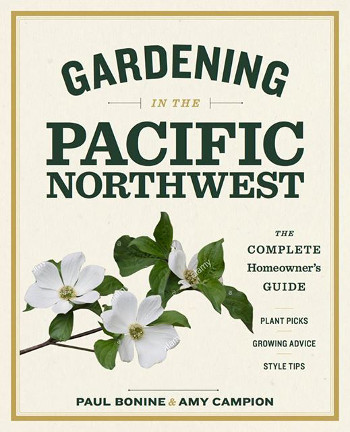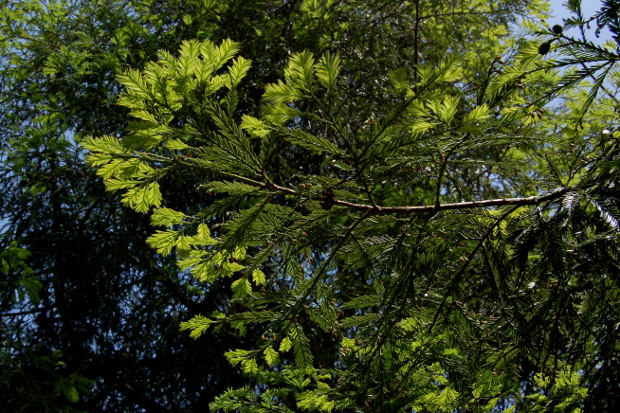 All plants have their pros and cons.
All plants have their pros and cons.
Writers of plant and seed catalogs try to paint each plant in the best light. Just as when a house listed as “cozy” usually translates to “small,” certain terms in plant catalogs raise flags in the minds of savvy consumers. Here are some phrases to be aware of when flipping through those decadent, glossy catalogs this winter:
Hardiness
- This word trips up all new gardeners. I once waited on a customer who didn’t know what it meant–and he had been a landscaper for seven years. Hardy means a plant should survive a certain low winter temperature, as in a Zone 6 plant should survive a low temperature of -10°F. Hardy does NOT mean the plant is fast-growing, resistant to disease, tolerant of extreme heat, or easy to grow.
- Sometimes catalog writers are a little too generous in their hardiness ratings of a plant. This isn’t a rampant problem, but it does happen. Consult an unbiased guide, like Michael Dirr’s Manual of Woody Landscape Plants.
- Sometimes new plants are rushed to market without being properly evaluated. Everyone in the industry remembers the infamous Limerock Ruby Episode of 2002. This gorgeous ruby-red coreopsis was released to an enthusiastic public that was told–without much testing, apparently–that it was a Zone 4 plant. Thousands were sold, but few re-emerged the following spring, and eventually the plant was reassigned to Zone 8. Whoops.
- Occasionally, hardiness zones are described in a misleading way. A certain catalog describes dwarf pampas grass (Cortaderia selloana ‘Pumila’) as being hardy all the way to Long Island. “Wow,” you think, “New York! It must be hardy.” But because of the mediating influence of the Atlantic Ocean, Long Island actually enjoys mild Zone 7 winters, comparable to those of Tennessee.
Ultimate Size
- When I was writing catalog descriptions at the nursery I worked at, I was surprised by how many conflicting reports of plant sizes were out there. Probably the biggest reason for this is that certain plants only meet their true potential in certain areas of the country. A douglas fir, for example, will grow to 250 feet or more in the Pacific Northwest, but in the Midwest will rarely reach 100 feet, and will usually fizzle out in our humid summers before coming close to that size.
- The ultimate size is not known on plants–particularly trees–that are brand-new, be they new hybrids or sports of existing plants. They haven’t had a chance to mature. Mature sizes on these plants are only a guess, based on the parents’ size.
- Catalogs often list the “10-year size.” This should never be confused with the ultimate size, which may be much, much bigger.
- Size words are relative. A “compact” burning bush gets 10 feet tall. A “giant” crocus is 4 inches tall!
Invasiveness
- Look out for words like “vigorous,” “fast-grower,” “fills in quickly,” “robust,” “spreader.” Does the plant overstep its bounds and become invasive?
- One catalog lists burning bush fruits as appealing to birds. Yes, but that is how it has become a terrible invader in some states. Check invasive plant lists for your state before causing more harm than good to wild spaces.
Color
- Blue is an uncommon and much desired color in flowering plants. Some plants listed as blue are really more of a lavender- or purplish-blue.
- Ditto red. Case in point, Buddleia davidii ‘Royal Red’ butterfly bush. It’s magenta.
- Magenta is considered by many to be a harsh, vulgar color in flowers. It often travels under the guise of “hot pink,” “rose-pink,” “purplish-pink,” “rose,” or “red.”
- Seed mixes are sometimes dominated by one color. I have grown Cosmos ‘Bright Lights’ mix, which was supposed to be yellow, orange, and red, but ended up to be mostly orange.
Fragrance
- Don’t assume that a traditionally fragrant plant, like a rose, is always so. In breeding for other traits, like form, color, or disease resistance, fragrance is sometimes inadvertently bred out.
- Fragrance is subjective. Japanese tree lilac (Syringa reticulata), for example, has a fragrance that some people like. I think it stinks, but then again, I don’t like the smell of lavender, either.




























Please let me know what you think. I’d love to hear from you!